Weaving the Gaps
Input Supplier
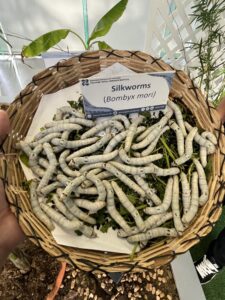
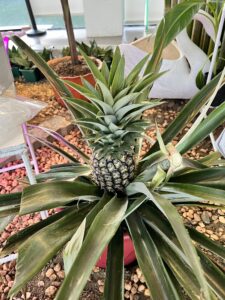
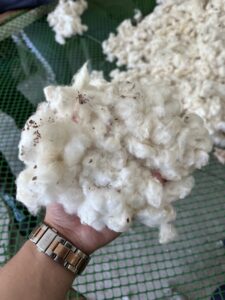
Inputs used in the production of commodities or fibers such as cotton, piña, abaca, bamboo, and banana vary, but generally include raw material propagation, tools, equipment, machinery, fertilizers, pesticides, labor, and other necessary supplies.
Raw materials, fertilizers, pesticides, tools, equipment, and machinery utilized for production are often provided by national government agencies (NGAs) such as DA-PhilFIDA or from established people’s organizations (POs) and NGOs.
With local suppliers identified in the RYPIC-Iloilo value chain map, such as agricultural supply establishments in Iloilo Province (e.g., Passi City, Leon, and Lemery), fertilizers and pesticides, if insufficient, are typically bought from them. However, some farmers opt not to use them, relying instead on farm residues to nourish their crops.
Cash subsidies, aimed at supporting the industry, are provided by DA-PhilFIDA, ensuring farmers have financial assistance for their production needs.
Production of NTF Raw Material



Many farmers are involved in natural textile fiber (NTF) farming in the Philippines, particularly in regions like Miagao, Leon, Bayawan, Lemery, Passi City, La Union, Ilocos, and Sultan Kudarat. These farmers primarily cultivate fibers from plants such as cotton, piña (pineapple fibers), abaca (Manila hemp), bamboo, and banana. However, only some of them are engaged with the value of RYPIC-produced NTFs. The ownership and maintenance of these farms are typically passed down from one generation to the next. Most of the farms are located in uplands, secondary forests, logged-over areas, and intercropped plantations, particularly in these rural regions. There is also a focus on expanding natural textile fiber farming in these areas to unlock their full potential.
In households across these areas, the head of the family is often considered the most knowledgeable when it comes to farming NTFs, especially for crops like cotton, piña, and abaca, and is expected to pass on this expertise to younger family members and hired laborers. Some farmers still adhere to traditional farming methods. Despite this, many NTF farmers face financial challenges, especially when it comes to land preparation and production. Moreover, NTF production, especially from crops like bamboo and banana, is labor-intensive and time-consuming compared to other crops, which can discourage investment. The geographical isolation of many farms in places like Miagao and Lemery makes regular visits difficult, with many farmers unable to check on their farms frequently.
Additionally, the production process for these natural fibers presents environmental and health hazards, both for the land and the farmers. These issues persist across various farming communities, from the lush forests of La Union to the upland areas of Sultan Kudarat, and require urgent attention to improve the livelihoods of farmers in these regions.
Integrator and Consolidator


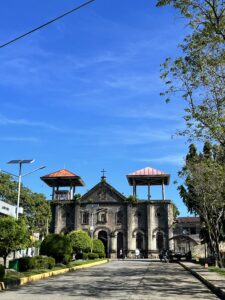
Natural textile fiber farmers in the Philippines have several channels through which they can sell their raw or pre-processed fiber. Generally, these channels include barangay, municipal, provincial, or class traders, pre-RYPIC processors, and RYPIC. Traders typically consolidate these raw fibers and sell them to higher-ranked traders. In some cases, pre-RYPIC processors and RYPIC buy their fiber requirements directly from the farmers.
Big wholesalers, such as Creative Definitions in Negros Island, play a significant role in this market by buying in large quantities, storing, processing, and redistributing products in smaller quantities to retailers and other buyers. These wholesalers, like RYPIC, provide essential value-added services such as storage and processing, which makes them vital players in the marketing channels (Rosenbloom, 2012; Gay, Ramos, & Ferrer, 2023).
Smaller wholesalers, operating in regions like Leon, Passi City, Sultan Kudarat, and Cauayan City, are also crucial in the supply chain. These small traders typically act as intermediaries who buy raw fibers from farmers and sell them in smaller volumes to other buyers. They often work within the suki system, where they establish long-term, trusted relationships with local farmers to source natural textile fibers.
However, traders, particularly unlicensed barangay and municipal traders, face challenges. These traders are at a disadvantage because they are not protected by agencies like PhilFIDA in terms of price monitoring and support. Without proper assistance, they are often vulnerable to price fluctuations and disputes with farmers. Furthermore, poor road conditions significantly increase delivery costs, and inadequate storage conditions can lead to the deterioration of fiber quality. The increasing taxes that add up to the cost of natural textile fibers, coupled with additional mark-ups for services provided by traders, also exacerbate these challenges (Briones, 2014; NEDA, 2019; DA-PRDP, 2023; PhilFIDA, 2023).
In this landscape, wholesalers like RYPIC and Creative Definitions, along with the smaller traders in Leon, Passi City, Sultan Kudarat, and Cauayan City, help to bridge the gap between farmers and buyers, despite the challenges faced by the industry.
Pre-processors of RAW NTFs



After harvesting, the raw materials of natural textile fibers (NTFs) undergo various processes to produce fibers that are either sold or given to RYPIC as the processor. Pre-processors play a crucial role in this stage, with some located in specific regions such as Lemery and Passi City for piña fibers, Leon for cotton, Sultan Kudarat for piña, abaca, and banana, and Cauayan City for bamboo. Although some government and private institutions have already provided mechanized machines for pre-processing, there are still farmers who prefer the manual processing of NTF raw materials. Traditional sun drying of fibers is a common practice before the fibers are sent to RYPIC. However, during the rainy season, this method faces significant challenges, as prolonged drying periods can lead to a loss of quality.
In addition to sun drying, initial sorting is typically done to meet the desired sizes or weight requirements, often measured in kilos per bundle, whether packed in sacks or other containers (Briones, 2014; NEDA, 2019; DA-PRDP, 2023; PhilFIDA, 2023). Despite the availability of mechanized machines, the manual processing methods continue to be preferred by some farmers in regions like Lemery, Passi City, Leon, Sultan Kudarat, and Cauayan City due to their familiarity and lower initial investment costs.
Logistics Service Provider



A key player in the value chain, often overlooked, is the logistics service provider. While not explicitly mentioned in the data, logistics providers play a critical role in transporting raw fibers from farms to pre-processors, and from pre-processors to larger wholesalers like Creative Definitions and RYPIC. Both Creative Definitions and RYPIC facilities (the main processor), have the capacity to handle the logistics involved in transporting and storing large quantities of fibers. This logistics capacity is essential for ensuring timely delivery and maintaining the quality of the fibers throughout the supply chain.
In this context, the logistics service providers—whether independent or integrated into the operations of these main processors—serve as a backbone of the NTF value chain, ensuring that fibers move smoothly from farmers to processors and eventually to the market.
Regional Yarn Production and Innovation Center (RYPIC)


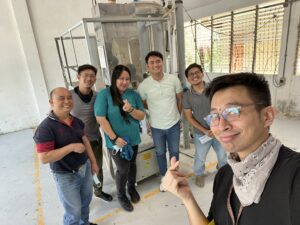
RYPIC is the main processor of natural textile fibers (NTFs) and yarns. As the central hub for processing, it plays a pivotal role in improving textile production in the Philippines by producing yarns made from various blends, such as cotton, cotton-abaca, cotton-pineapple, cotton-bamboo, cotton-banana, and other combinations of NTFs. RYPIC has a targeted production capacity of 50 kilograms of yarn per day, making it a crucial player in the industry.
As the envisioned regional production center, RYPIC is committed to providing access to supply and technical support to micro, small, and medium enterprises (MSMEs) involved in textile production.
In addition to its role as the main yarn processor, RYPIC promotes the utilization of NTF-blended yarns by integrating science, technology, and innovation into the production process. The facility also plays a vital role in ensuring the sustainability of the value chain by establishing and nurturing relationships with various actors throughout the industry. Furthermore, RYPIC fosters initiatives in academic research and develops technical competencies, helping to strengthen and advance the sector as a whole (RYPIC, 2019).
In this context, RYPIC not only processes the raw fibers into high-quality yarns but also serves as a key enabler of growth and sustainability within the entire NTF value chain, providing essential support to small-scale producers and contributing to the advancement of the textile industry in the Philippines.
Distributor
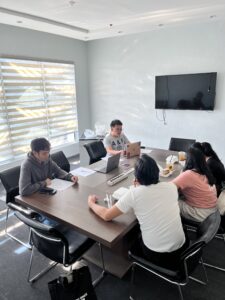

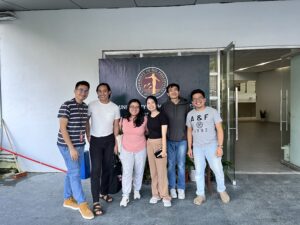
Wholesaler-retailers play an essential role in distributing and selling processed natural textile fibers (NTFs), such as the yarns produced by RYPIC. One key player in this aspect is Panublix, a textile-sourcing platform and marketplace that connects Philippine weavers and garment makers with local and global fashion markets. As an affiliated retailer, Panublix acts as an intermediary, helping to sell RYPIC-produced yarns in individual or small quantities to a wide range of consumers.
Panublix not only distributes these high-quality yarns but also promotes the use of RYPIC’s processed fibers in the broader fashion industry. Through its platform, it facilitates access for local and international markets to Philippine-made textile products. Panublix’s role is especially vital in reaching both large-volume, low-priced discount stores and mass merchandisers, as well as department stores and upper-end specialized retailers (RYPIC, 2019; Gereffi & Korzeniewicz, 1994; Gay, Ramos, & Ferrer, 2023).
While Panublix is a primary wholesaler-retailer for the processed yarns, other potential retailers of RYPIC-produced NTFs are yet to be fully identified. However, Panublix’s involvement is a significant step toward creating a sustainable market for Philippine-made textile products, facilitating the expansion of RYPIC’s yarns into both domestic and international markets.
Consumers

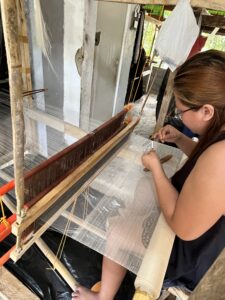
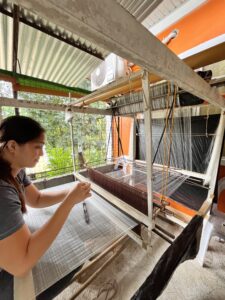
Buyers play an integral part of the value chain, and a variety of buyers include weavers, fashion designers, institutional buyers, and other potential consumers of natural textile fibers (NTFs). These buyers are from different regions within the Philippines and beyond. The weavers come from areas such as Aklan (Banga, Balete, and Kalibo) and Iloilo (Miagao) contributing to the local and regional production of textile products. Additionally, a student from Zarraga, Iloilo is conducting research on the use of these fibers for academic purposes.
Fashion designers also play a significant role in the market, with notable designers based in Sto. Tomas, Batangas, Mandaluyong City, and Italy. The designer from Italy, whose residence is in Tubungan, Iloilo, adds an international flair to the promotion of NTFs, connecting Filipino textiles to global fashion trends. Moreover, a wall-decor manufacturer in San Juan City incorporates NTFs in their products, further broadening the scope of buyers.
Panublix, based in Iloilo City, also serves as a key platform for connecting these fibers to weavers, designers, and manufacturers, bridging the gap between production and market distribution.
The study also highlights the role of HABI: The Philippine Textile Council, an institutional buyer and non-governmental organization that emphasizes the value and uniqueness of the Philippines’ cultural identity by fostering a deep understanding of indigenous textiles while modernizing the local textile industry (RYPIC, 2019; HABI: The Philippine Textile Council, Inc., 2023).
These various buyers—from local weavers to international fashion designers like the one based in Italy, and institutional buyers like HABI—represent a diverse end market for RYPIC-produced NTFs. Other potential buyers have yet to be identified by the researchers, but their inclusion could expand the market for Philippine-made textile products even further.
